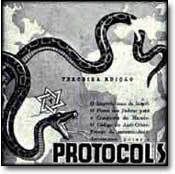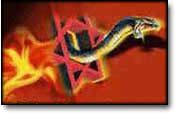After 50 years of deflecting the requests of Jewish groups, the Polish Government has agreed to change the wording on stone tablets at Auschwitz and Birkenau, the adjacent Nazi camps where more than one million Jews died during World War II.
The move follows decades of appeals by Jewish groups, who say the current plaques do not fully reflect the suffering of Jews there and focus too heavily on the camp's non-Jewish victims. While thousands of non-Jews were among the estimated 1.5 million killed at Auschwitz, the victims were predominantly Jewish.
"This is an historic event, not just for Poland, but for the whole world," said Kalman Sultanik, a New Yorker who is vice chairman of the international council set up by the Polish Government for Auschwitz's preservation.
"The Communists didn't do it, but finally it is done," said Mr. Sultanik, who is a survivor of three concentration camps. "Fewer and fewer survivors live to tell what happened there. This is for posterity."
Jerzy Wroblewski, the curator of Auschwitz, said the text on the new tablet, to be placed at the main monument at Birkenau, which housed the crematoria, will read:
"In memory of the countless victims of Nazi genocide from Poland and other countries of occupied Europe: Jews, Poles, Gypsies, Soviet prisoners of war and others, who suffered and perished in the camp and in the gas chambers. The world kept silent.
O Earth, cover not up my blood
And let my cry never cease.

Simon Wisenthal's Faked Holocaust Memoirs
Fake Shoah Memoir Threatens Holocaust Industry
Treblinka was No Extermination Camp
Additional tablets will be near the monument, with this inscription translated into 18 languages: "Let this place remain for eternity as a cry of despair, and a warning to humanity. About one and half million men, women, children and infants, mainly Jews from different countries of Europe, were murdered here. The world was silent. Auscwhitz-Birkenau, 1940-1945."
Mr. Wroblewski said the tablets were expected to be in place within the next several weeks.
The new tablets will replace one with the following inscription: "This is the place of martyrdom and death of four million victims murdered in the Nazi genocide, 1940-45."
It was previously thought that four million died at the camps. More recent research has revealed the figure to be closer to 1.5 million.
For Jews and Poles, Auschwitz has long been a source of antagonism, with each claiming it as a symbol of their own suffering under the Nazis during the war. More than three million non-Jewish Poles died during the war from starvation, disease, exhaustion or in Nazi death camps. More than six million Jews died.
Auschwitz is one of the few camps that remains intact. At the war's end, the Nazis, sensing their defeat, destroyed much of the evidence of their death camps. The barracks at Auschwitz, however, reveal the ghastly details of life and death there.
The preserved camp at Auschwitz, designed as a museum under the former Communist governments, emphasizes Nazi atrocities toward Soviet citizens during the war. One barracks displays rows and rows of framed photos of Poles who died there. Jews, gypsies and homosexuals -- all slated for genocide -- are represented as secondary victims.
Only one barracks near the exit honors the Jewish dead. Financed by several Jewish organizations, it includes photographs, identification cards and other memorabilia donated by survivors and others in a stark, dimly lit hall.
In 1989, groups of Jewish demonstrators gathered to protest the placement of a Roman Catholic convent adjacent to the camp. The convent has since been moved, but only after a bitter dispute that included angry statements by Jozef Cardinal Glemp, the Catholic primate of Poland, about Jews controlling the press.
Before World War II, about 10 percent of Poland's population of 35 million were Jews. It was Europe's largest concentration of Jews. Now, only a few thousand remain. While more and more people are discovering Jewish roots, it is thought the average age of most Jews here is 70.
http://query.nytimes.com/gst/fullpage.html?res=9E0CE1DF1139F934A25755C0A964958260&sec=&spon=&emc=eta1
![[9_10_s22.jpg]](https://blogger.googleusercontent.com/img/b/R29vZ2xl/AVvXsEjTXnQay9wzz0E6nVHrVhaHKoq_zYXDqZjijHlNDQzj90MZzInrCuVX4ciFYCiBfZ7lhlgr2bBhhnl7ddWbhdih5JbXjQYbA605TNyiq046bQqjG2A4S-nHTmh1VBTQSG6tmc23wq47QQ/s1600/9_10_s22.jpg)




No comments:
Post a Comment